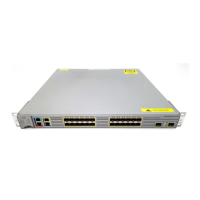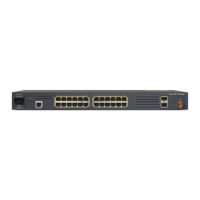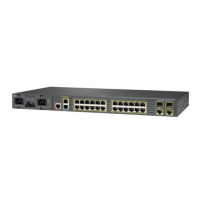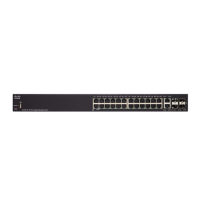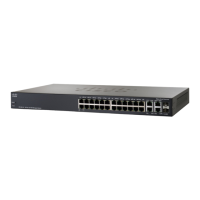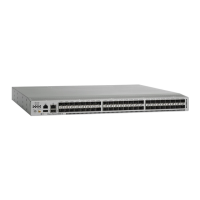34-19
Cisco ME 3800X and 3600X Switch Software Configuration Guide
OL-23400-01
Chapter 34 Configuring MPLS, MPLS VPN, MPLS OAM, and EoMPLS
Understanding MPLS Traffic Engineering and Fast Reroute
• Node protection is also referred to as next-next-hop (NN-Hop) protection because the new route
bypasses the next hop node and terminates at the node following the next-hop node. Node protection
also provides protection from link failures because traffic bypasses the failed link and the failed
node.
For more information about MPLS TE fast reroute, see this feature module:
http://www.cisco.com/en/US/docs/ios/12_0s/feature/guide/fslinkpt.html
The reroute decision is completely controlled locally by the router interfacing the failed link. The
headend of the tunnel is also notified of the link failure through the IGP or through RSVP; the headend
then attempts to establish a new LSP that bypasses the failure.
Note Local reroute prevents any further packet loss caused by the failed link. If the tunnel is configured to be
dynamic, the headend of the tunnel then has time to reestablish the tunnel along a new, optimal route. If
the headend still cannot find another path to take, it continues to use the backup tunnel.
Fast link change detection (FLCD) and RSVP hello messages form the failure detection mechanism.
FLCD is notified when an interface encounters a link status change and RSVP hello enables the RSVP
nodes to detect when a neighboring node is not reachable. You can configure RSVP hello messages by
entering the ip rsvp signalling hello [fast reroute] refresh global configuration command.
Note The ip rsvp signalling hello [fast reroute] refresh command is needed only when loss of signal cannot
be detected.
Backup tunnels have these characteristics on the switch:
• A backup tunnel can protect multiple LSPs.
• When the primary tunnel restores, traffic changes from the backup tunnel back to the primary tunnel.
• The switch does not support backup tunnel bandwidth protection.
• The switch supports MPLS TE fast reroute over only routed ports and not over SVIs or
EtherChannels.
MPLS TE Primary and Backup Autotunnel
The primary and backup autotunnel feature enables a switch to dynamically build backup tunnels and to
dynamically create one-hop primary tunnels on all interfaces configured for MPLS TE.
• Primary autotunnel dynamically creates one-hop primary tunnels on all MPLS TE interfaces.
Instead of configuring an MPLS TE tunnel with fast-reroute, you enter the mpls traffic-eng
auto-tunnel primary onehop global configuration command to dynamically create one-hop tunnels
on all MPLS TE interfaces.
• Backup autotunnel enables a router to dynamically build backup tunnels when they are needed so
that you do not need to configure them manually. To configure backup autotunnel, enter the mpls
traffic-eng auto-tunnel backup router configuration command.
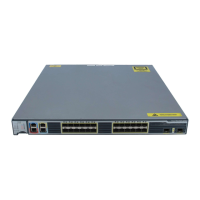
